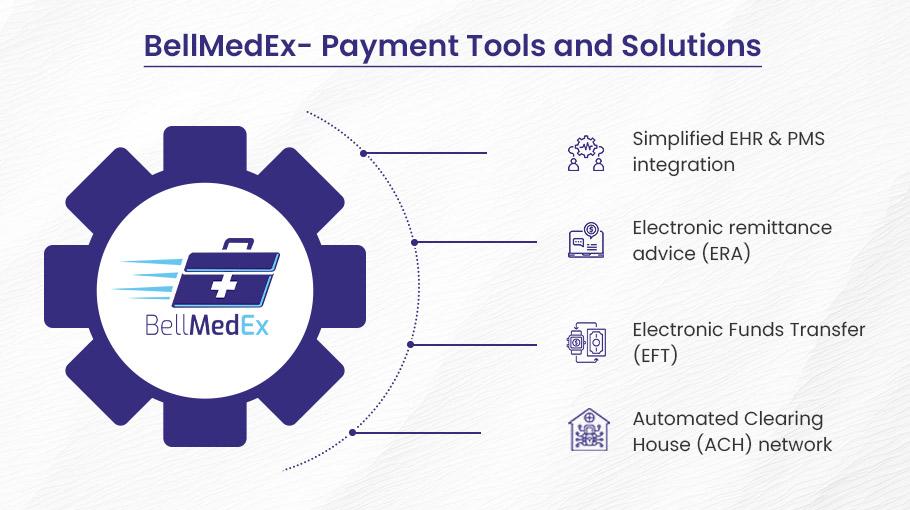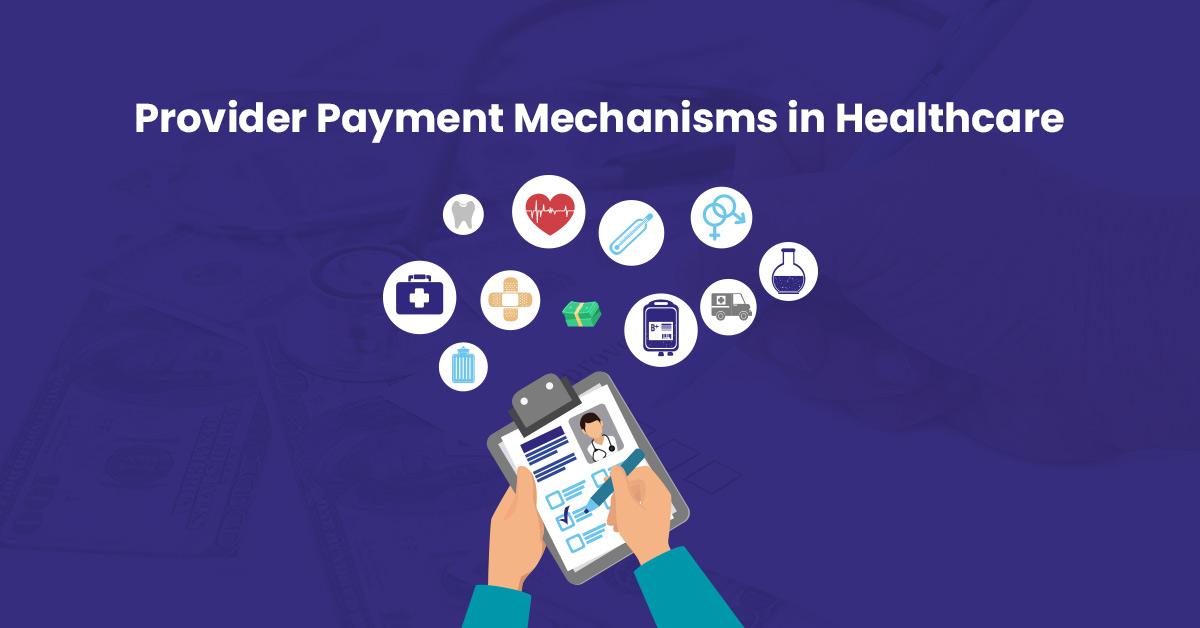As a healthcare provider, you need a simple and smooth payment way. Getting paid right for your services can be tricky until you find the best method.
Here we will share some common provider payment systems used in healthcare. So you can pick what is right for your needs. The goal is to find a simple, smooth way to get the money you earn. With the best fit, you will get paid promptly and properly.
1). Fee-for-Service Method
Fee-for-service (FFS) is the usual way to pay for healthcare. Doctors and hospitals get money for each service they give patients. They set rates ahead of time for all kinds of care. Since they earn more by doing more, this makes them want to provide extra services.
FFS is the easiest and longest-used payment method. Most doctors like it because it gives them the most money back. Under this model, there are no bundled payments. Doctors get paid for each visit or hospital stay. While this model helps doctors, it also has some downsides for them to think about. For instance, FFS may lead to fragmented care since providers are paid for volume over value.
Example: A patient has a skin rash. The dermatologist looks at the rash and performs a biopsy to test for skin cancer. The patient is billed for the office visit, skin biopsy, and pathology analysis of the biopsy.
2). Capitation Method
Capitation is a simple payment method. Doctors get a fixed fee each month for each patient. This fee covers all care for the patient. The doctors get paid before giving any care.
With capitation, the health plan and doctors agree on a monthly fee for each patient. This fee pays for hospital stays, clinic visits, drugs, and doctor checkups. Doctors get the monthly fee upfront.
By taking a capitation fee, doctors take on some money risk. They must provide care within the fixed capitation fee. But this makes them focus on keeping patients well and coordinating care. Overall, capitation aims to cut costs and align doctor interests with high-quality care.
Example: ABC Health Insurance agrees to pay Dr. Johnson $50 per patient per month to provide basic medical services. Dr. Johnson receives the $50 on the 1st of each month for each patient enrolled, regardless of whether they visit that month.
3). Episode or Case-Based System
In a care model based on Episodes or Cases, doctors get a fixed payment for all services given during a patient’s care period. This bundled payment is decided upfront based on the patient’s illness and needed treatment plan. It covers the whole cost of care from the time the patient is admitted to when they are discharged.
Extra procedures or services during this time may raise costs. But under the bundled payment model, this risk moves to the doctor. The doctor must manage the total costs of the episode within the fixed bundled payment amount. This encourages efficient care.
Overall, episode-based payments aim to reduce fragmented fee-for-service payments and promote coordinated care for the patient during their whole treatment journey.
Example: A hospital receives $10,000 for a knee replacement surgery. If the patient has to be readmitted within 90 days for a complication from the surgery, the hospital does not receive additional payment for the readmission.
4). Global Budget Payment Method
Hospitals receive a fixed total payment per year in the Global Budget system. The payment is set beforehand. If a hospital provides less services than predicted, their budget will be reduced for that year. However, they will receive a higher payment the following year to compensate.
This method assists in stabilizing service volume and a hospital’s market share. Payers can gradually decrease the budget and service volume of less productive or underutilized hospitals. They do this if excess capacity exists in the provider network.
Example: BMD Hospital received a $10 million global budget for the year. They ended up providing fewer services than expected, so their budget was decreased to $9 million the following year. However, if BMD Hospital exceeds their reduced budget the next year, their funding will be increased again to compensate.
5). BellMedEx Provider Payment Solutions
BellMedEx provides cutting-edge payment solutions tailored to healthcare groups. Their patented systems quickly and accurately pay providers for care.
The company’s automated system reimburses providers electronically after each patient visit. It is customized to the practice type, facility and care model. Whether a small private practice or large hospital, they have a solution.
This medical billing company leads the industry in payment systems. They closely track all reimbursements, manage claim denials and oversee revenue cycles. They use electronic tools like EFTs and clearinghouse links to maximize efficiency.
With this innovative system, providers get paid fast. The company handles everything so practices get prompt payment. The customized services make them the top choice nationwide for improving payment operations.

💡 Do you know?
Providers using BellMedEx healthcare payment system claim up to 30% more revenue!
Other Provider Payment Methods in the US Healthcare
There are some basic payment types used in healthcare. Each type is defined by what unit it pays for. This could be a service, episode, condition or population. These types are more specific than general terms like fee-for-service or capitation. They also divide financial risk between the payer and provider. Each type reflects a risk factor in healthcare spending. The payment types balance cost control and quality care in different ways. Understanding them is key to evaluating payment reform ideas.
6). Per Time Period
Providers receive a predetermined payment for a set period (e.g., monthly, quarterly, or annually).
Application:
- Commonly used in capitation models where providers are paid per patient per month (PMPM) to cover all necessary services.
- Also used in global budgets where a healthcare organization receives a fixed budget to manage all patient care within a specific time frame.
Example:
In a capitation model, a primary care physician might receive $50 per patient per month. This payment covers all primary care services for that patient, regardless of how many visits or treatments the patient requires during the month.
7). Per Beneficiary
Providers are paid a fixed amount for each enrolled beneficiary, typically on a monthly or annual basis.
Application:
- Commonly used in managed care organizations and health maintenance organizations (HMOs).
- Encourages providers to focus on preventive care and efficient management of chronic conditions to avoid costly interventions.
Example:
In a capitation model, a healthcare provider might receive $100 per month for each patient enrolled in their care.
8). Per Recipient
Payment is made for each individual recipient of a specific service or set of services.
Application:
- Often used in public health programs and specialized care settings.
- Helps ensure that providers are compensated for each patient they serve, promoting access to necessary services.
Example:
A mental health clinic might receive a fixed payment for each patient receiving therapy sessions, regardless of the number of sessions.
9). Per Day
Providers are paid a fixed amount for each day a patient is under their care.
Application:
- Common in inpatient settings such as hospitals, nursing homes, and rehabilitation centers.
- Ensures that providers are compensated for the duration of care, but may incentivize longer stays.
Example:
A nursing home might receive a daily rate for each resident, covering all services provided during their stay.
10). Per Dollar of Cost
Providers are reimbursed based on the actual costs incurred in delivering care.
Application:
- Used in cost-reimbursement models, often in public healthcare programs.
- Ensures that providers are compensated for their expenses but may lack incentives for cost control.
Example:
A hospital might be reimbursed for the cost of supplies, staff time, and other expenses related to a patient’s treatment.
Conclusion
As a healthcare provider, whether you are an individual, small practice or a hospital, you need a transparent and smooth payment mechanism. We hope these common payment methods enable you to choose the right one for your practice or facility.





